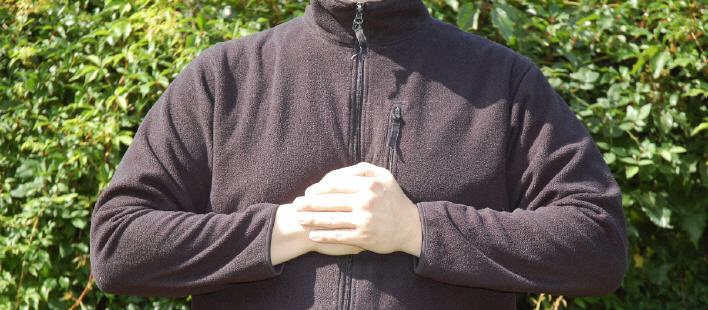Kinhin
This text is an excerpt from my book The Secret Book of Zen.
(Note: The images shown here were taken exclusively for this website © 2011 Jan Hendriksson, publication and duplication not allowed)
(...)
Kinhin is mindful walking, a walking meditation traditionally used between two Zen meditation sessions to loosen up the practitioner’s limbs again which are strained after the sitting meditation. At the same time, the stillness acquired in meditation should also be maintained. Kinhin is typically performed after the first round of meditation. To do it, you and all other participants walk in a row, one after the other, with each individual’s head bowed following the person in front in circles through the practice hall. The walking usually starts at a fast pace. Ankles can crack and pop at this time. This is normal, since the joints have just previously been considerably stressed by the Zen meditation. Then, after a few rounds of kinhin, the pace is slowed down. You are suddenly moving as if in slow motion, and slowly place one foot down in front of the other. Even during kinhin, try to maintain the concentration you have attained during meditation. In doing so, pay attention initially, in a concentrated fashion, to the soles of your feet, how they touch the ground at every step, roll off, float forward and once again touch the ground. Later, your concentration will include your whole body and the whole room.
How it’s done
The first step in kinhin usually begins with the left foot. In the process, shift your weight onto your left foot and stand on it with your full body weight. The other leg does not bear any weight, the same as during normal walking; you bend your foot and touch the floor with the toes of the right foot. The heel is up, showing the sole of your foot to the person behind you. The intent is to truly have only the left leg bearing any weight. You are touching the floor only with your right bent foot to keep your balance. Proceed after that by alternating your weight on your feet. This sounds quite complicated; but this is the normal movement when we walk. We perform it many times a day, but mostly unconsciously and much faster. During one step breathe in, stop briefly with your full body weight on one foot, and breathe out again while you perform the next step with the other foot. During kinhin, the hands are joined, resting on the body below the rib cage. In the process, you enclose your right thumb in your left hand, or vice versa. The other fingers of your right hand are placed naturally and loosely over the left. One other possibility is to clench your left hand in a fist. In doing so, the left thumb is enclosed in the left hand. Now place your fist into your open right hand. The fingers of the right hand rest on the outside of the left fist. The left fist is therefore pressed into the palm of the right hand. Place your hands on your body, below the chest. If you place your hands on your belly, your hand position is too low; if you put them directly on your rib cage, they are too high. Your hands should be at about the height of the solar plexus. That is where our diaphragm is located. Due to the weight of the hands, a natural pressure is exerted on the diaphragm. This partially blocks your breathing in its urge to travel upwards. In this way it cannot spread upwards during your inhalation. You are thereby maintaining the correct breathing posture, which will be explained later in this book. Do not put any extra pressure on your diaphragm; the natural weight of your hands is totally sufficient. During kinhin, focus your gaze on the calves of the person in front of you; incline your head downwards. Avoid getting into a cramped position.







